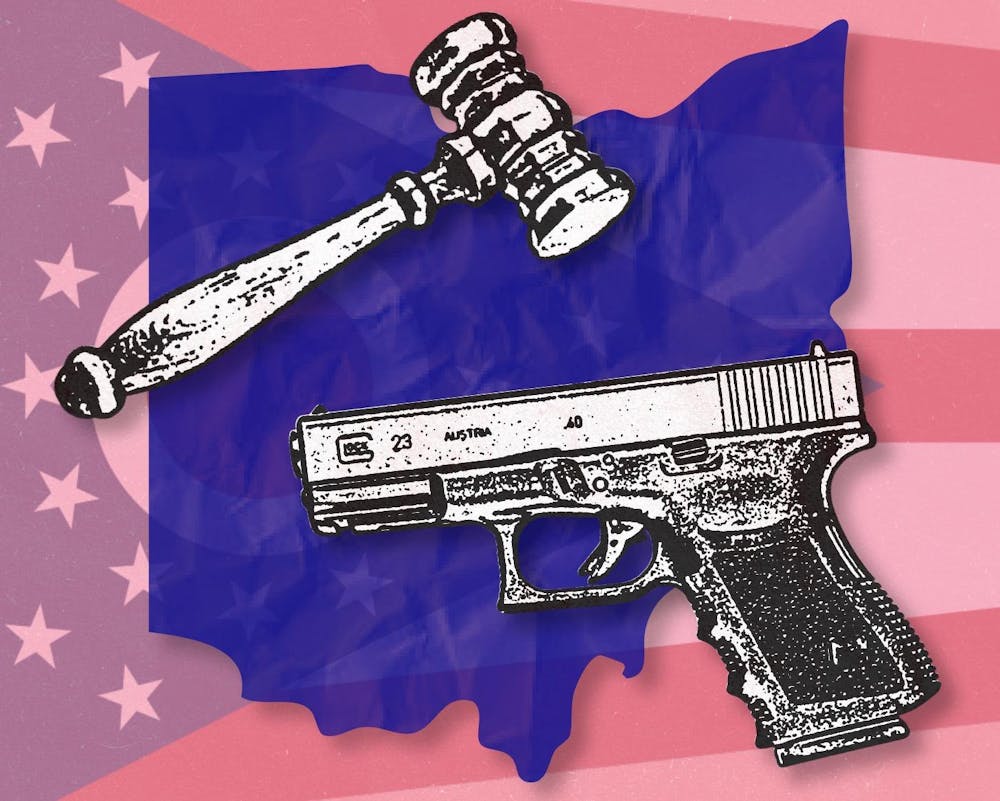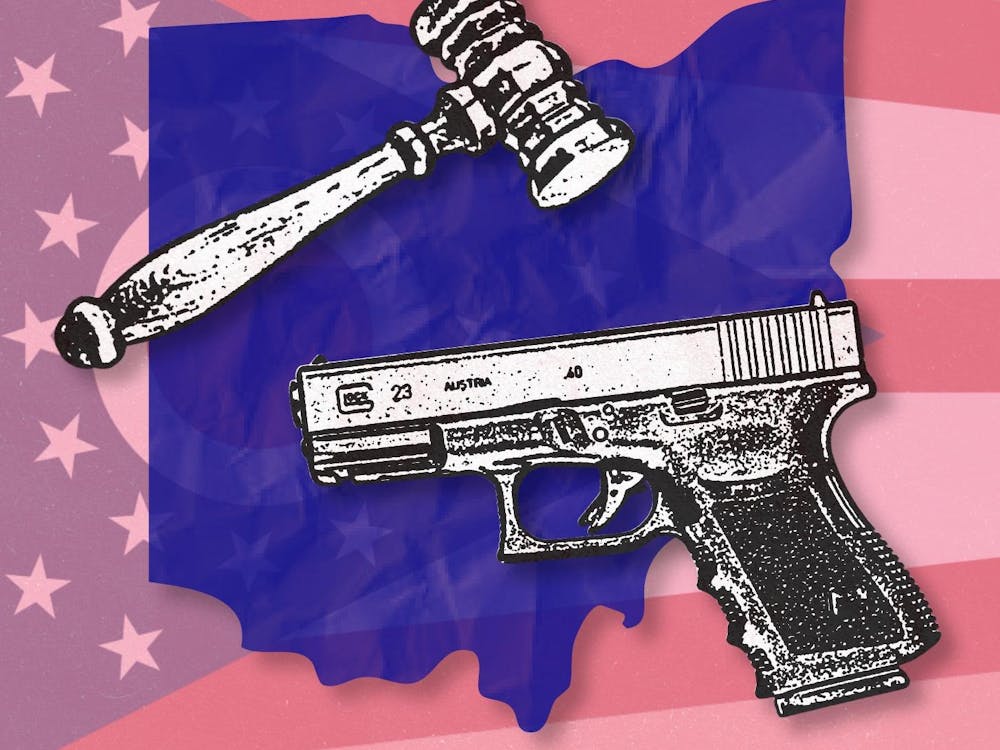This column, as well as four others, was written by a student in Matthew Arbuckle’s Federalism and Intergovernmental Relations (POL 364) class, based on the question of whether cities in Ohio should be able to enact gun laws in their own jurisdiction.
The Second Amendment of our Constitution states: “The right of the people to keep and bear Arms, shall not be infringed.” This right must remain protected and shall not be infringed upon by anyone, including city councils.
In December 2022, Columbus’s City Council passed an ordinance banning the possession of magazines holding 30 rounds or more. Many saw this as a step in the right direction, while others felt that it violated their Second Amendment rights. This case is currently still in Court, pending in both the Ohio Supreme Court and the Delaware County Court of Common Pleas.
It is unclear whether the court will uphold this or not. However, Ohio cities should not have the right to enact their own gun laws as it violates the U.S. Constitution, it is an ineffective form of gun control and it is prohibited by the Ohio Revised Code.
First and foremost, allowing Ohio cities to enact their own gun laws is unconstitutional. The Second Amendment of the United States Constitution protects all citizens’ right to obtain and bear arms. If an Ohio city, or rather any lower level of government, were to enact its own gun laws limiting this freedom, it would be in direct violation of this amendment.
The Constitution is the supreme law of the land, as established by the Supremacy Clause in Article VI, Clause 2 of the Constitution, meaning that it trumps all other laws or ordinances made by lower levels of government. Essentially, the Second Amendment is a sure-proof protection against adding gun restrictions, meaning that Ohio cities cannot enact their own gun laws.
Secondly, allowing Ohio cities to enact their own gun laws would create confusion and ambiguity, making it an ineffective method of gun control. In order for gun control to be effective, it must be streamlined and uniform across the entire state. In Ohio, there are approximately 247 cities making up about 931 municipalities overall. Therefore, potential gun laws would vary from municipality to municipality, creating unclear guidelines.
The variation amongst gun laws would also make it difficult for citizens to keep track of policy, as any varying policies would exist. For example, carrying a gun might be illegal in the city where you work but not the city in which you live, leaving the lines blurred on where and when you have to change what you do with your gun. Additionally, the variation in the degree of these laws may mitigate the effects of these laws, as some may not fully understand or comply with the variation in laws.
Finally, allowing Ohio cities to establish their own gun laws not only violates the U.S. Constitution, but it also violates the Ohio Constitution. The Ohio Constitution, in alignment with the U.S. Constitution, states in Article 1, Section 4: “The people have the right to bear arms for their defense and security…” Building on this idea, in the Ohio Revised Code, the preemption law affirms the state’s authority to regulate all laws and ordinances regarding firearms. Under this preemption law (Section 9.68), any ordinances or laws made regarding guns at lower levels are prohibited.
The goal of preemption and the Ohio Constitution is not just to affirm the Second Amendment of the U.S. Constitution, but rather to establish uniformity and organization when it comes to gun ownership in Ohio. In several cases brought before the Ohio Supreme Court, preemption has been challenged and upheld, as the majority agreed that state uniformity is the most efficient form of gun control. Ultimately, any attempts by Ohio cities, such as Columbus, to circumvent this will most likely end up being a waste of both taxpayer money and resources as it faces a long time going through litigation to ultimately not be upheld.
Many who oppose this argument cite that the home rule authority delegated to Ohio municipalities would allow Ohio cities to enact their own gun laws. Home rule authority, as written in Article XVIII, Section 3, describes a municipality’s autonomous ability to enact policies, regulations and laws that act in its best interest. However, local governments must still act and abide by state laws. Since both the Ohio Constitution and Revised Code take an unequivocal stance on guns, home rule does not apply to this argument and is insufficient in supporting the argument for Ohio cities to enact their own gun laws.
The first step to effective gun policy is uniformity. Allowing Ohio cities to enact their own gun laws violates the U.S. Constitution, is ineffective and is prohibited by the preemption law in the Ohio Revised Code. Ultimately, Ohio deserves clear and uniform laws that uphold both the U.S. and Ohio Constitutions while also responsibly handling the issue of gun violence.
Enjoy what you're reading?
Signup for our newsletter
Gracie Cribbs is a sophomore double-majoring in public administration and economics. She is a research associate at the Center for Public Management and Regional Affairs (CPMRA) and also holds a leadership position for LIFE (Leading the Integration of Faith and Entrepreneurship) at Miami.



